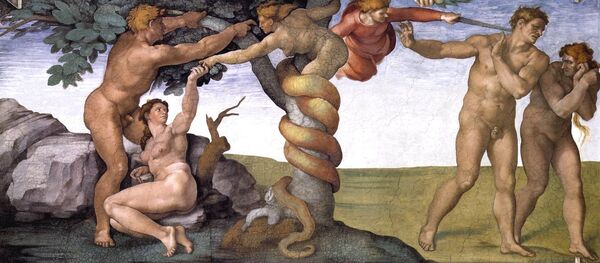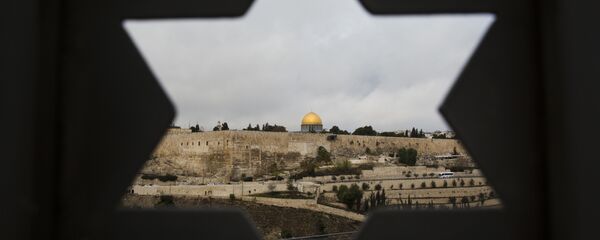Purdue University Professor Lawrence Mykytiuk has managed to verify the existence of 53 Hebrew Bible figures thanks to a system that relies on three criteria: a biblical name must match the name on an authentic inscription; they must match in terms of setting and time; and match in three specific details identifying an individual, such as name, title, and father’s name.
READ MORE: Apocalypse How: Events Resembling 'Biblical Plagues' Sighted Around the Globe
Still, there are some figures whose existence hasn’t been proven through artefacts even though these archaeological findings are considered highly important to biblical research.
Isaiah Bulla
Several media outlets reported last year that a 2,700-year-old clay seal was discovered in a Jerusalem excavation and may bear the name of the biblical prophet Isaiah.
The stamp matches the criteria outlined by Professor Mykytiuk: it was found in a controlled scientific excavation, it dates to the same period as Isaiah and it was discovered in a royal quarter in Jerusalem, where the biblical prophet used to live and work.
The clay seal was found alongside another bulla – belonging to King Hezekiah, and as evidenced in 16 Bible verses, the prophet worked with the monarch closely.
On top of this, the title on the stamp reads “Belonging to Isaiah”, but one letter of the final word – Nvy – has generated much debate among academics, as to whether it can truly be considered evidence of his existence. Incidentally, the Hebrew word for “prophet” is Nvy’, but the final symbol has gone missing over the course of 2,700 years.
READ MORE: Scientists Find Possible Proof of Red Sea Parting During Biblical Exodus
While it seems that all the evidence allows researchers to say that the bulla belonged to the prophet, this tiny nuance appears to be undermining it.
Elisha
Unfortunately, the finding was broken into two pieces, with a part of it missing, but still the name was readable.
Even though it dates to the same period that Elisha lived and was found in an area where he spent much of his time, scholars are hesitant to verify his existence since the artefact is broken.
Jeremiah and the Lachish Letters
The Lachish Letters, Hebrew ink inscriptions written on 18 clay ostraca, date back to around 586 BC – just before the destruction of Jerusalem, and give a unique glimpse into the last moments of the Kingdom of Judah.
READ MORE: Biblical Pharaoh May Have Founded Ancient Israel, Archaeologist Claims
Discovered in 1935 by the Wellcome Archaeological Research Expedition to the Near East, the letters were sent by a commander of a small outpost in Lachish to the military governor of the city ahead of the looming Babylonian invasion.
However, ostraca do not mention him by name – only the last Hebrew letter of what is supposedly Jeremiah’s name survived.
While it is widely assumed that he was the most renowned prophet of the time, and the final “ah” may refer to him, there were also two false prophets, Urujah and Hananiah – both names would fit due to their endings.
This – in addition to the fragmentary nature of the letters – remains a major obstacle in identifying who the individual in question was.
Shebna
Found outside Jerusalem in 1870, the Shebna inscription is believed to refer to the biblical royal steward to King Hezekiah, Shebna, dating to circa 700 BC. The limestone inscription is broken at the point where the tomb’s owner’s name could be written.
“This is [the tomb of]… iah, which is over the house. There is no silver or gold here, only… [his bones]… and the bones of his maidservant with him. Cursed be the man who opens it”, it reads.
The name on it is speculated to be “Shebnaiah”, a longer form for Shebna, while the phrase “which is over the house” is said to be the ancient term for royal steward, which matches Professor Mykytiuk’s criterion on the title.
READ MORE: Christian Pastor Points to BIBLICAL PROPHECIES in Notre Dame Blaze Aftermath
And the part with the curse provides a link to a verse of the Bible mentioning Shebna’s tomb-curse – only the name is missing to verify his existence.





